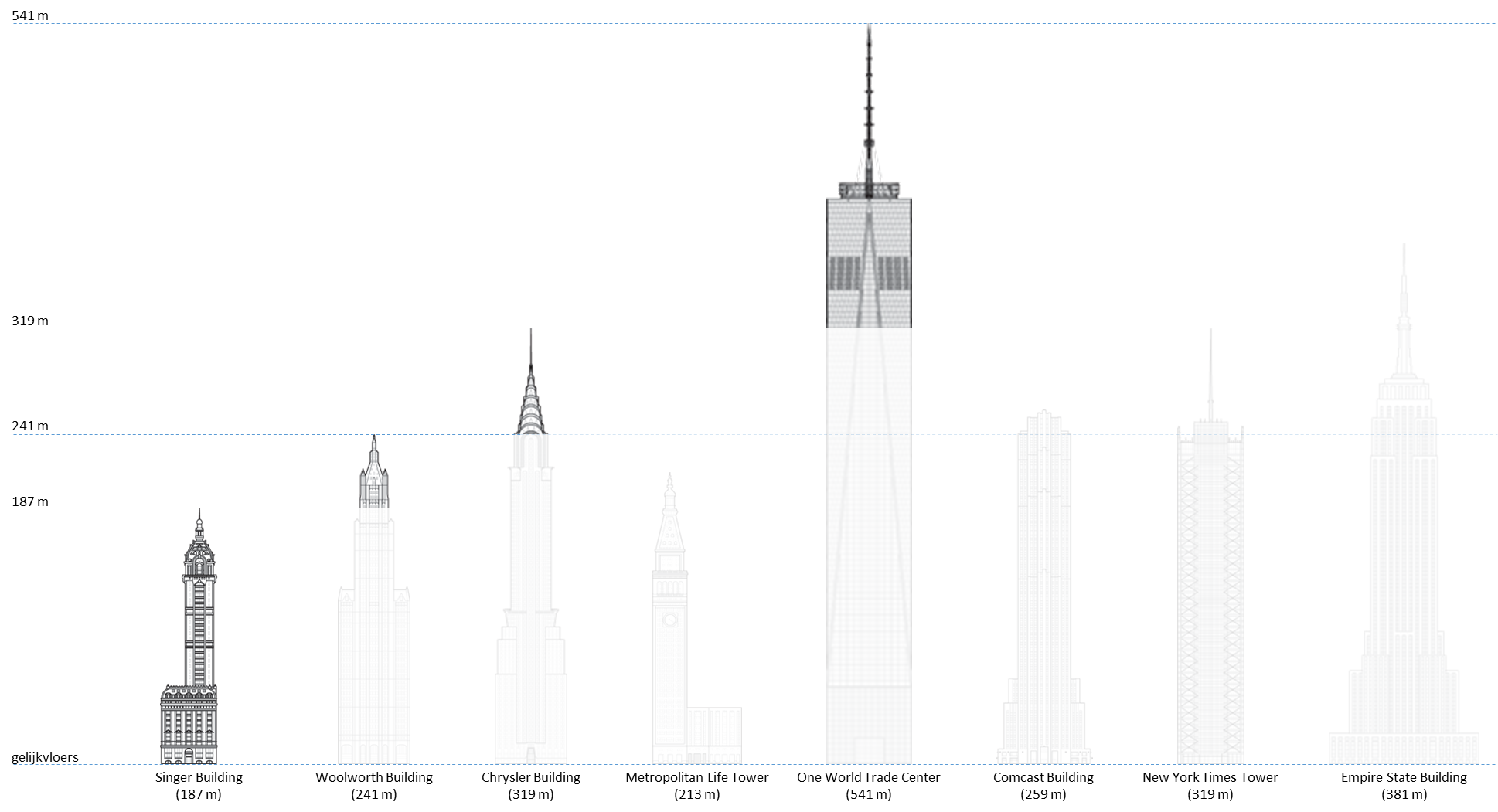Published in 1915, Cleveland Moffet's The Conquest of America imaged a German assault on the United States in 1921. Moffett had intended the novel as a warning of the importance of military preparedness, and it was quickly forgotten, but one passage would come to take on an eerie significance — an attack on Manhattan:
"Ah! So!" said von Hindenburg, and he glanced at a gun crew who were loading a half-ton projectile into an 11.1-inch siege-gun that stood on the pavement. "Which is the Woolworth Building?" he asked, pointing across the river.
"The tallest one, Excellency — the one with the Gothic lines and gilded cornices," replied one of his officers.
"Ah, yes, of course. I recognize it from the pictures. It's beautiful. Gentlemen," — he addressed the American officers, — "I am offering twenty-dollar gold pieces to this gun crew if they bring down that tower with a single shot. Now, then, careful! …
"Ready!"
We covered our ears as the shot crashed forth, and a moment later the most costly and graceful tower in the world seemed to stagger on its base. Then, as the thousand-pound shell, striking at the twenty-seventh story, exploded deep inside, clouds of yellow smoke poured out through the crumbling walls, and the huge length of twenty-four stories above the jagged wound swayed slowly toward the east, and fell as one piece, flinging its thousands of tons of stone and steel straight across the width of Broadway, and down upon the grimy old Post Office Building opposite.
"Sehr gut!" nodded von Hindenburg. "It's amusing to see them fall. Suppose we try another? What's that one on the left?"
"The Singer Building, Excellency," answered the officer.
"Good! Are you ready?"
Then the tragedy was repeated, and six hundred more were added to the death toll, as the great tower crumbled to earth.
"Now, gentlemen," — von Hindenburg turned again to the American officers with a tiger gleam in his eyes, — "you see what we have done with two shots to two of your tallest and finest buildings. At this time tomorrow, with God's help, we shall have a dozen guns along this bank of the river, ready for whatever may be necessary."
In the end J.P. Morgan1, Andrew Carnegie2 and John D. Rockefeller3 are held hostage and ordered to raise a billion dollars to indemnify the city. "The Conquest of America is as full of thrills as the most excitable and fearful patriot need ask," raved the Independent. "If all the prominent Americans named in the tale, as hostages or otherwise, get about the business of preparedness, this invasion will never be."

Assignment
We consider the skyline of a city with a number of tall buildings standing next to each other. Below, as an example, you see the skyline of New York City, with a number of the largest buildings displayed to scale.

If you would look at these buildings from a large distance to the left, which sections of what building would be visible, if we assume that buildings in the back are completely hidden by the buildings in front of them.
Input
The first line contains a number $$n \in \mathbb{N}_0$$ that indicates the number of building that are standing next to each other. Then the $$n$$ buildings are described from left to right by their name and their height in meters (an integer), each on a separate line.
Output
Describe the sections of the buildings that are visible if you look at the given skyline from a large distance to the left. In doing so, you may assume that buildings in the back are completely hidden by the buildings in front of them. The (sections of the) buildings must be listed in increasing distance order from the point of view. The exact format of the output can be derived from the example given below. This example corresponds to the skyline depicted in the above figure.Example
Input:
8
Singer Building
187
Woolworth Building
241
Chrysler Building
319
Metropolitan Life Tower
213
One World Trade Center
541
Comcast Building
259
New York Times Tower
319
Empire State Building
381
Output:
Singer Building is visible from the ground floor up to 187 meters.
Woolworth Building is visible from 187 meters up to 241 meters.
Chrysler Building is visible from 241 meters up to 319 meters.
One World Trade Center is visible from 319 meters up to 541 meters.